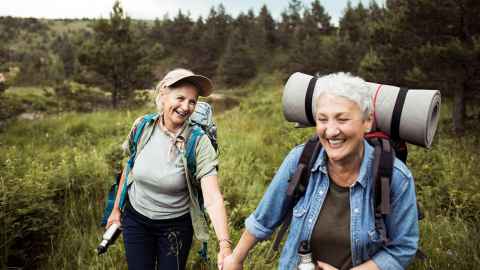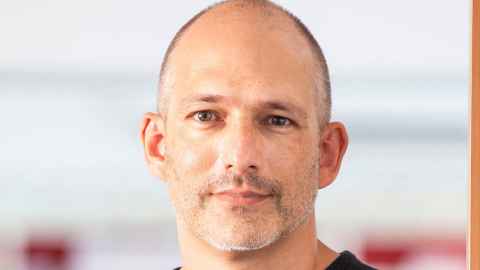Same-gender sexual orientation “throughout New Zealand society”
15 November 2019
The country’s first-ever major sexual health survey shows that some degree of same-gender sexual orientation exists throughout Aotearoa New Zealand society, and is more common among women than men, says a University of Auckland expert.

The 2014/15 New Zealand Health Survey: Sexual and Reproductive Health Module, released today by the Ministry of Health, is the first comprehensive national survey of sexual and reproductive health in Aotearoa New Zealand. The seven reports cover first heterosexual sex, heterosexual sexual behaviour, sexual orientation, contraception, pregnancy planning, sexually transmitted infections and non-volitional sex.
The Ministry of Health survey investigated three aspects of sexual orientation: sexual attraction, sexual behaviour and sexual identity. It asked 10,168 respondents aged 16-74 years about their experiences with males and with females, and over different time periods.
One in 20 men (5.4 percent) and more than 1 in 6 women (17.6 percent) reported same-gender sexual attraction at least once in their lifetime. This reduced to 4.3 percent of men and 8.6 percent of women when asked about the last 12 months.
“The survey shows that some degree of same-gender sexual orientation exists throughout New Zealand society and is more common among women than men,” says Dr Peter Saxton, Director of the Gay Men’s Sexual Health research group at the University of Auckland’s School of Population Health.
Dr Saxton says the survey offers the most comprehensive picture of contemporary adult New Zealanders’ sexuality to date. “It answers some pretty basic population health questions we haven’t had good evidence on until now,” he says.
Now we have to help sexual orientation minorities become visible, come forward, be included and receive healthcare that’s appropriate to their needs.
“Using this wealth of data, we can estimate the size of the gay and bisexual community for public health campaigns like HIV prevention. We can monitor health inequalities experienced by gay and bisexual individuals. We can also appreciate that when we ask about sexual orientation in different ways, we get different estimates and capture different people.
“For example, asking about same-gender sexual behaviour is most useful for understanding sexual health. Same-gender sexual attraction can help us understand why poor mental health and addictions might arise within hostile social or family environments. And sexual identity can tell us what proportion of patients in primary care might be willing to disclose their sexuality to their GP.”
Generally, more respondents reported a same-gender sexual attraction than same-gender behaviour, and fewer still reported a minority sexual identity like gay, lesbian or bisexual. Almost one in 20, or 4.2 percent of men and one in 15, or 6.5 percent of women reported ever having a same-gender sexual partner, reducing to 2.6 percent of men and 3.2 percent of women reporting a same-gender sexual partner in the last 5 years.
Overall, 2.3 percent of men and 3.7 percent of women currently identified as gay, lesbian or bisexual.
This means that nationally, around 46,000 men and women identify as gay or lesbian, 72,000 as bisexual, and 21,000 as an ‘other’ sexual identity.

“Counting a population is such a fundamental part of being recognised in public health and social service delivery. Now we have to help sexual orientation minorities become visible, come forward, be included and receive healthcare that’s appropriate to their needs,” said Dr Saxton.
Same-gender sexual orientation was found in every age and ethnic group, and in all neighbourhoods from least- to most-deprived.
“This reinforces that people with a minority sexual orientation come from all walks of life in Aotearoa New Zealand, and we are present in all communities”.
For example, Māori women were more likely than non-Māori women to have ever had a same-gender partner. Men in the most deprived neighbourhoods were more likely to identify as bisexual than men in the least deprived. Women aged 25-44 reported the highest prevalence of same-gender attraction at least once in their lifetime (about a quarter, or 25 percent of these women).
As well as women being more likely overall to report some same-gender attraction or behaviour compared to men, Dr Saxton said the patterns by age appeared to differ between genders. “Men’s sexual orientation didn’t vary much by age, whereas younger women’s experiences were often very different to older women’s.”
Dr Saxton also noted that as with all surveys, some respondents’ experiences didn’t fit neatly into pre-defined categories. Māori and Asian men were more likely to report an ‘other’ sexual identity that wasn’t gay, bisexual or heterosexual. And some adults (0.5 percent of men and 1.8 percent of women) said they never felt attraction to anyone in their lifetime.
Dr Saxton said it’s important that these data are now used to improve health and social services. They also give rise to further research questions, and Dr Saxton and colleagues plan to work with the Ministry to investigate how the dimensions of sexual orientation overlap.
Media contact
Nicola Shepheard | Media adviser
DDI: 09 923 1515
Mob: 027 537 1319
Email: n.shepheard@auckland.ac.nz